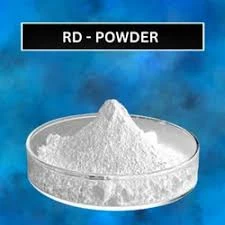
Dec . 04, 2024 16:59 Back to list
hpmc hs code
Understanding HPMC and Its HS Code A Comprehensive Overview
Hydroxypropyl Methylcellulose (HPMC) is a versatile and widely used polymer that has found applications across various industries, including pharmaceuticals, food, cosmetics, and construction. Understanding its classification, particularly through the Harmonized System (HS) Code, is essential for manufacturers, importers, and exporters engaged in international trade.
What is HPMC?
HPMC is a semi-synthetic polymer derived from cellulose, which is one of the most abundant natural biopolymers found in plants. The modification of cellulose through the introduction of hydroxypropyl and methyl groups imparts unique properties to HPMC, making it an essential ingredient in numerous products. Its qualities include water solubility, thickening capabilities, and film-forming abilities, which enhance product performance in various applications.
Applications of HPMC
1. Pharmaceuticals HPMC is commonly used as a binder, film former, and sustained-release agent in oral dosage forms such as tablets and capsules. Its ability to control the release of active pharmaceutical ingredients (APIs) makes it a crucial component in formulating effective and patient-friendly medications.
2. Food Industry In the food sector, HPMC serves as a thickening agent, emulsifier, and stabilizer. It improves the texture and consistency of food products while also extending shelf life. Its application is evident in sauces, dressings, ice creams, and gluten-free products, thanks to its ability to mimic the texture of gluten.
3. Cosmetics HPMC is also widely used in cosmetics and personal care products due to its emollient properties and ability to provide a smooth texture. It is found in lotions, creams, and gels, enhancing their stability and sensory appeal.
4. Construction In the construction industry, HPMC is incorporated into cement-based materials and tile adhesives, improving workability and adhesion. Its water retention properties ensure that these mixtures remain workable for extended periods, contributing to better application and performance.
hpmc hs code

The Importance of HS Codes
The HS Code system is an internationally standardized numerical method of classifying traded products. Implemented by the World Customs Organization (WCO), HS Codes facilitate international trade by providing a uniform system for identifying goods, streamlining customs processes, and enabling statistical analysis.
For companies dealing with HPMC, understanding its specific HS Code is critical for compliance with international regulations and ensuring smooth import/export operations. The HS Code for HPMC usually falls under Chapter 39, which covers plastic and articles thereof, specifically in the subcategory related to cellulose derivatives and their salts. Accurately identifying and using the correct HS Code helps mitigate risks related to tariffs, trade barriers, and compliance issues.
HPMC and Global Trade
As HPMC continues to gain traction in diverse industries, its global market is expanding. Manufacturers and suppliers must navigate various regulatory frameworks and tariffs related to HPMC products in different regions. Understanding the HS Code for HPMC not only aids in accurate tariff assessments but also helps in accessing information regarding trade agreements that can influence pricing and market entry strategies.
While the specific HS Code for HPMC may vary slightly between regions due to localized classifications, a general reference can be found under 3912.90 in many countries. However, businesses should always verify with local customs authorities or trade organizations to ensure compliance with the most current classifications and regulations.
Conclusion
In summary, Hydroxypropyl Methylcellulose (HPMC) is a highly valuable polymer with a multitude of applications across several industries. For global trade, understanding its HS Code is vital for effective communication, compliance, and strategic planning. As the demand for HPMC rises, industry stakeholders must remain informed of both its applications and the regulatory landscape surrounding its trade to capitalize on the opportunities presented by this versatile material. Proper navigation of the complexities associated with HPMC and its HS code can lead to enhanced market reach, competitive advantage, and successful business operations in the global marketplace.
-
Versatile Hpmc Uses in Different Industries
NewsJun.19,2025
-
Redispersible Powder's Role in Enhancing Durability of Construction Products
NewsJun.19,2025
-
Hydroxyethyl Cellulose Applications Driving Green Industrial Processes
NewsJun.19,2025
-
Exploring Different Redispersible Polymer Powder
NewsJun.19,2025
-
Choosing the Right Mortar Bonding Agent
NewsJun.19,2025
-
Applications and Significance of China Hpmc in Modern Industries
NewsJun.19,2025







